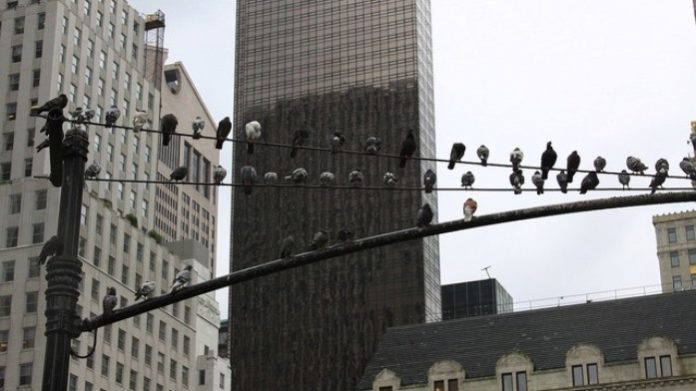If you live in a city, the skyline has likely changed a lot in the past few years. Condos are sprouting up everywhere, airplanes and helicopters zoom by regularly, maybe you’ve even see some drones flying around.
But humans are not the only ones that use the space above the ground.
“Thousands of species rely on the air to survive – not just to breathe, but also to travel, to get their food, and to find mates,” says Christina Davy, a conservation ecologist with the Ontario Ministry of Natural Resources and Forestry. “Some animals even sleep while flying!”
And humans could be disrupting that delicate balance.
That’s why Davy and her colleagues, Kevin Fraser and Adam Ford, proposed a new field of study in the journal Conservation Letters last week: aeroconservation.
Aeroconservation would seek to understand humans’ impact on aerial habitats, how these affect the species that call the air home, and how we can develop conservation tools to help.
Getting the idea off the ground
Davy, Fraser, and Ford met through the Liber Ero Fellowship program, a Canadian initiative to support the next generation of conservation scientists, where they discovered a mutual passion: protecting the airspace.
Aerial habitats are often ignored in favour of their more obvious terrestrial and aquatic counterparts, but they actually faces very similar threats.
Millions of flying animals are killed each year through collisions with buildings, power lines, aircraft, or wind turbines. Human structures can also result in aerial habitat fragmentation – when something separates and isolates two parts of a habitat.
Fraser, an Assistant Professor at the University of Manitoba, studies bird migrations, while Ford, a post-doctoral fellow at UBC, studies habitat fragmentation. Davy herself has a focus on bat and reptile conservation.
“Together, we brought a range of perspectives to the aeroconservation project,” says Davy.
Changing the way we look at the sky
The first step towards aeroconservation is to define aerial habitats and have them recognized.
Davy and colleagues propose a system similar to aquatic habitats, where the air is divided into layers from the ground up. The first layer rises one km above the ground or the treetops, with subsequent layers reaching all the way to the stratosphere.
“Animals in each layer face different threats, and have different adaptations to using this range of altitudes,” explains Davy.
After aerial habitats are recognized, there are a range of policy tools that are used already in terrestrial and aquatic environments that could be applied to the air, including creating protected areas.
Aeroconservation would also involve research to help create conservation tools. For example, identifying major migration routes could delineate no-fly zones during peak migration periods. Acoustic detection devices could identify periods of high bat activity and trigger turbines to stop turning. Novel window coatings could help birds spot the threat before it’s too late.
Davy is excited to get these discussions underway.
“It’s going to take cooperation and creativity to change the way we look at the sky.”








































